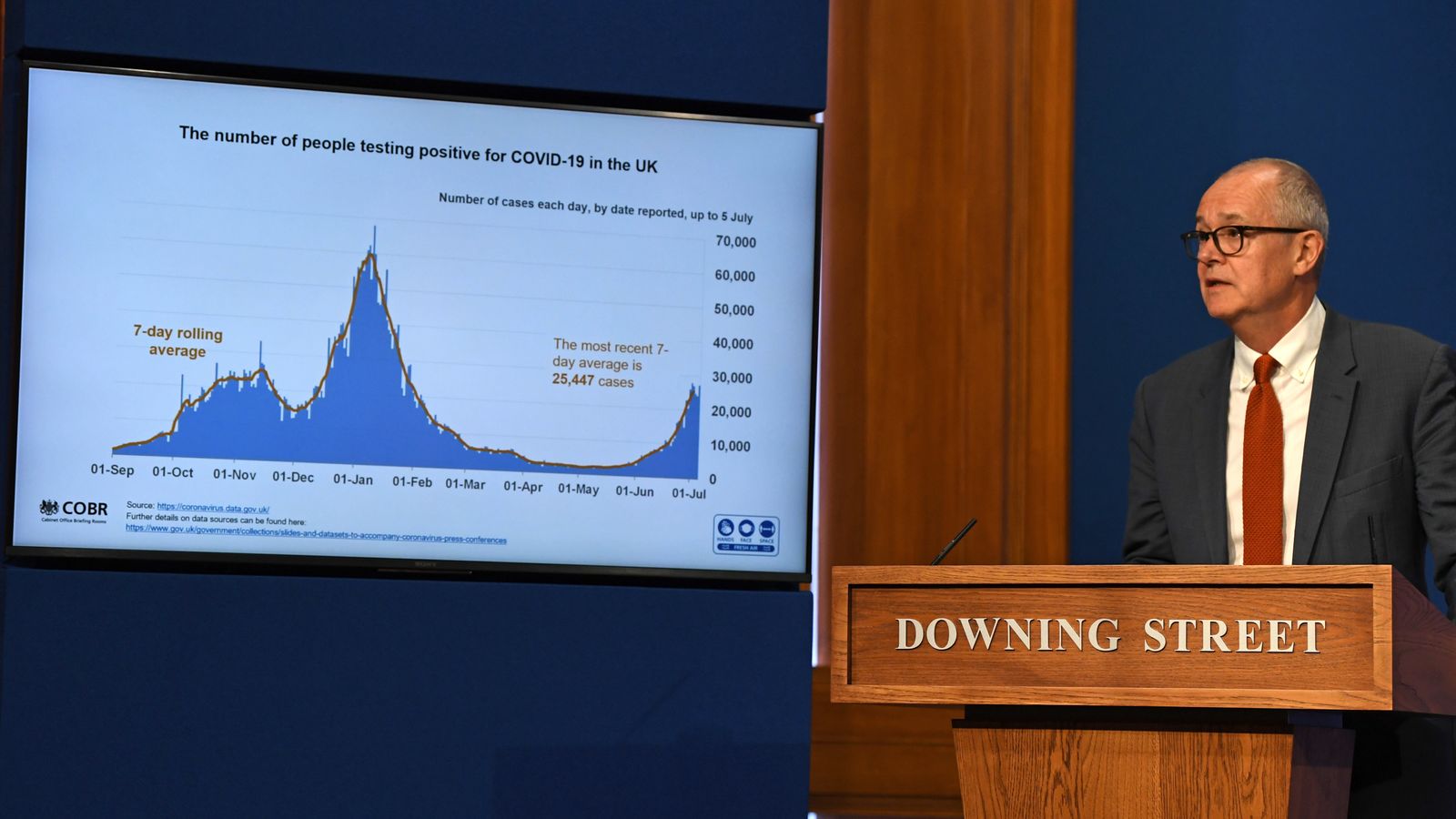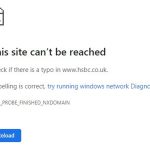The government’s scientific advisers and modelling groups have warned the COVID-19 epidemic is “clearly significant and rising”, and that maintaining low case numbers would help the UK deal with any potential future issues.
It comes after Boris Johnson announced his intended bonfire of coronavirus regulations later this month – in which he seeks to take England away from “government diktat” and move towards personal responsibility.
Among the moves considered is the ending of legal COVID requirements to wear face coverings.
Live COVID updates from the UK and around the world
However, the men flanking the prime minister at a Downing Street news conference – England’s chief medical officer Professor Chris Whitty and the government’s chief scientific adviser Sir Patrick Vallance – painted a more sombre picture of the coronavirus situation in the UK.
Modelling from the Scientific Advisory Group for Emergencies (SAGE) and other experts also urged caution over the next stage of the pandemic in England.
Sir Patrick said that, “while vaccines have weakened the link between cases and hospitalisation”, it is not a “completely broken link – and we will still see increases in hospitalisation”.
He added that a further increase in deaths can also be expected for the same reason.
The chief scientific adviser said the number of cases in the UK is doubling every nine days – with young people the most likely to be affected and that about a quarter of a million people are estimated to have the coronavirus in the UK at the moment.
However, the doubling time for hospitalisations is “slower than for cases”.
Professor Whitty said: “The number of cases going in [to hospital] a day at the moment is relatively low compared to previous waves – around about 300.
“But if you double up and then double up and then double up… you get and, in fact, in a surprisingly small number of doublings, you get to really quite high numbers.”
He did stress that modelling showed the “peak” of the epidemic will be reached before the NHS sees the same pressures as last winter.
Prof Whitty also said he would continue to “wear a mask under three situations, and I would do so, particularly at this point when the epidemic is clearly significant and rising”.
A newly published SAGE document, titled “Considerations in implementing long-term ‘baseline’ non-pharmaceutical interventions” was considered on 22 April by the group.
It states that maintaining lower case rates could have several benefits – including allowing Test Trace and Isolate to work more effectively, quicker identification of variants of concern like the Delta strain, reduced risk of variants of concern arising and also allows the NHS more capacity for routine care.
Higher risk of infection and lower vaccination rates in groups from “lower socioeconomic position and minority ethnic backgrounds” could also lead to an increase in health inequalities.
The paper adds: “There is significant risk in allowing prevalence to rise, even if hospitalisations and deaths are kept low by vaccination. If it were necessary to reduce prevalence to low levels again (e.g., variants of concern become more pathogenic for others previously less affected), then restrictive measures would be required for much longer.”
One of the first expert reactions to Boris Johnson’s announcement came from Professor Devi Sridhar, of The University of Edinburgh, who said England was now in “uncertain territory”.
“This is a massive experiment and the world is watching to see what happens when you have a new variant which is dominant,” the global public health expert told Sky News.
Please use Chrome browser for a more accessible video player
“You have pretty good vaccine uptake amongst groups, but at the same time, rising cases, rising hospitalisations, and then all the breaks being taken out of a system.
“So right now, we’re in uncertain territory and it’s hard to see this being irreversible [in] the way they’re painting it, given all of the breaks taken out instead of kind of cautious steps of unlocking.”






















